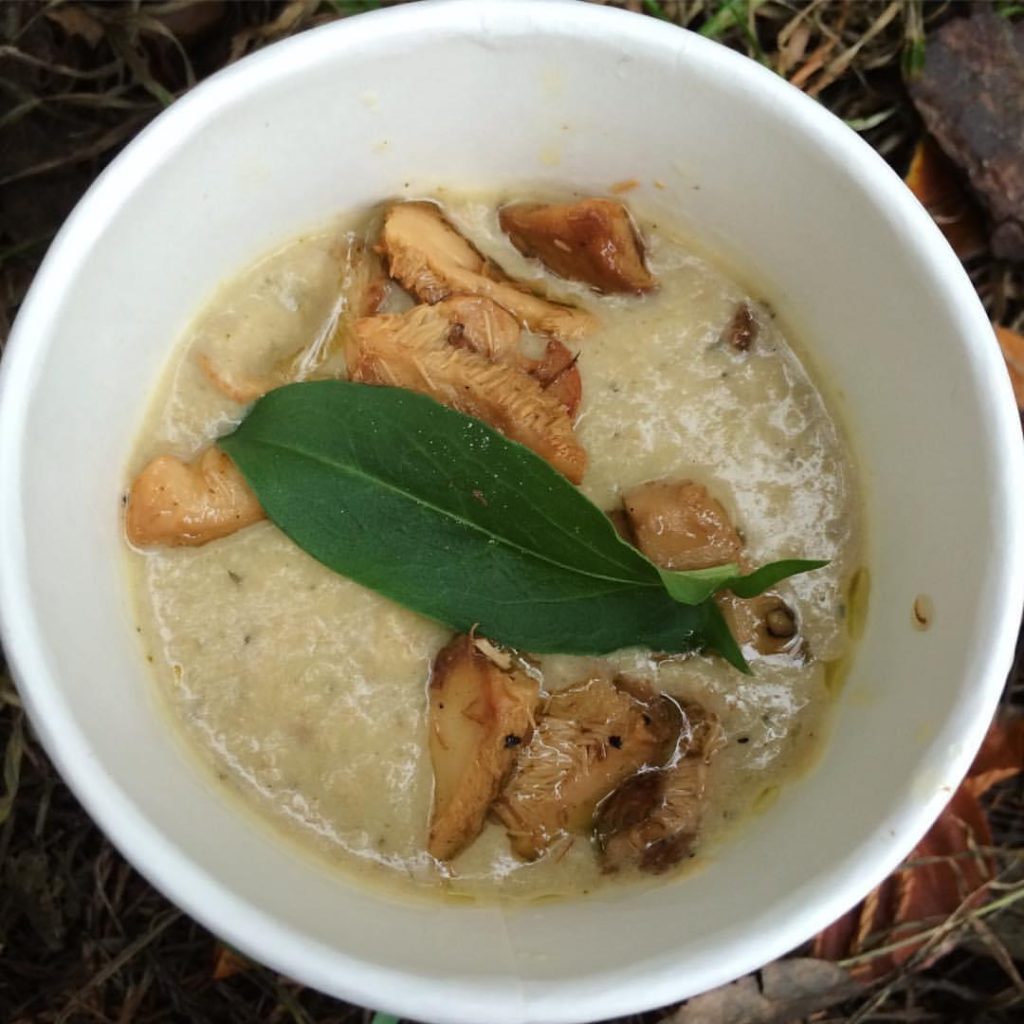
It’s so worth making your own stocks. You get all that goodness plus a wonderful depth of flavour. It feels like such a natural thing for a forager to do too. We tend to collect and dry so many wild spices, mushrooms, roots, sea vegetables etc. This is an excuse to play. It’s very quick and easy to do and you can freeze any spare stock you make or keep in the fridge for use over the following days. It’s definitely best to use the freshest organic or foraged ingredients for stock rather than sorry looking bits and pieces otherwise destined for the compost heap. Yours could be a lot simpler than the one I’ve described. Root vegetables are great (one or two is fine), seaweed (if you have), dried mushrooms, a few garlic cloves, leek trimmings, an onion, a stick of celery, optional spices. That would do it. I hope this inspires you to make some of your own semi-wild soups because I know you’ll enjoy it!
Suggested ingredients;
Alexanders shoots, seeds, fennel seeds, star anise, a cinnamon stick, wild fennel, parsnip, carrot, leek, onion, garlic, burdock root (bought or foraged), squash, hawthorn haws (from the freezer), dried ceps and seaweeds. I often use a mixture of bought and wild seaweeds combined with mushrooms – They each possess their own beneficial nutrients and umami flavours that together work wonders in many dishes, not only soups and stews.
You can use any or all of these ingredients or for a very simple Japanese dashi style stock: Pour hot water into a jug or pan and add seaweed and a few dried mushrooms. Leave for half an hour then use.
My usual way of making stock is as follows:
Roughly chop vegetables, using diagonal cuts to release more of the sweetness. Add to a large stock pot, cover with water and bring to a near boil. Turn down the heat to the lowest setting and leave for thirty minutes. The water only needs to be steaming, as opposed to simmering, but definitely not boiling. Once your stock is made, strain and discard the vegetables (it’s not a waste, as the nutrients and flavours are in your delicious stock). Once cooled, spare stock can be kept in the fridge and used over the coming days. I usually freeze a batch or two as well.
